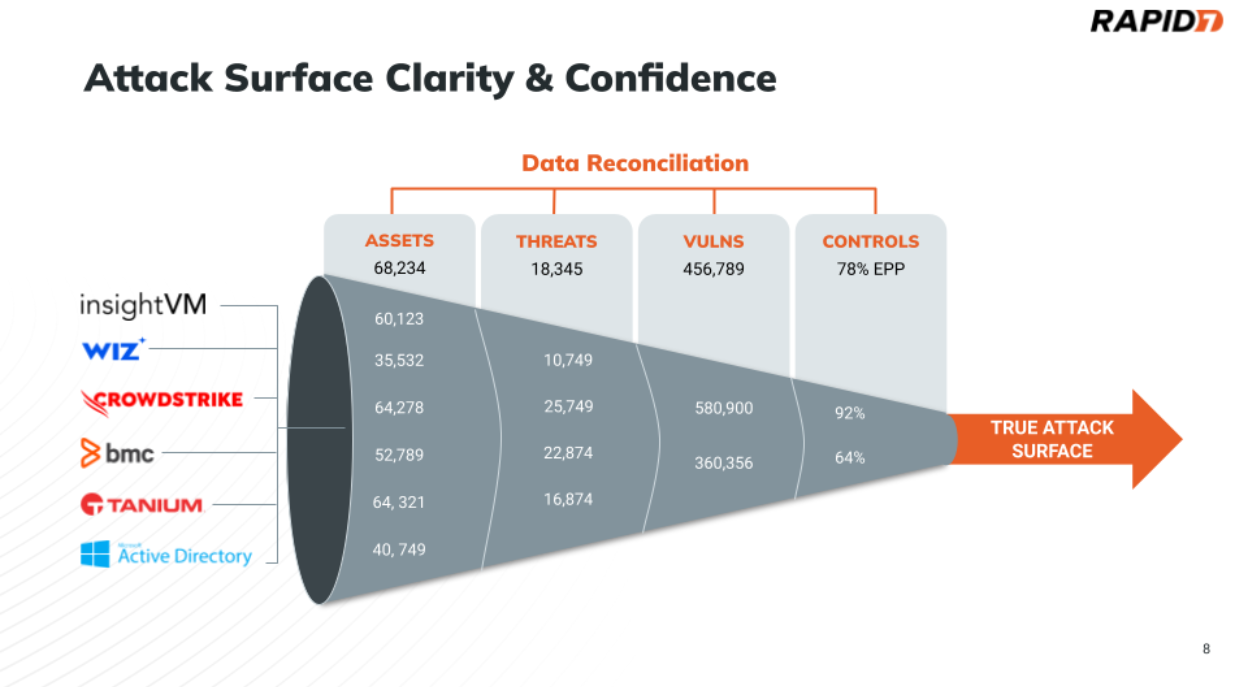
Over the past two blogs (Help, I can’t see! A Primer for Attack Surface Management Blog Series and The Main Components of an Attack Surface Management (ASM) Strategy) in our series on Attack Surface Management, we’ve focused on the drivers and core elements of an Attack Surface Management solution. In this post, we’ll delve intoprocess of discovering assets. We cannot secure what we cannot see so getting this piece right is foundational to the success of your ASM program. This blog will explore four different methods of asset discovery starting with the most basic, deployed software agents.
Software Agents
Deployed agents are how most asset inventory and asset management systems work. A software agent is deployed on a workstation or server, phoning home to the management system about the asset. The benefits of this approach are that you get a very high fidelity dataset on this particular asset, including up-to-date information on installed software, location, etc. However, this approach is only as good as the reach of the software agent. From an asset discovery perspective, the problem that is encountered is that you cannot discover assets that do not have that software agent installed. If we consider the funnel diagram below, this is effectively having visibility from one row in the funnel. In reality, most organizations do not have 100% deployment coverage of agents and many assets that will not be able to deploy agents, so they have many different tools that provide asset visibility, all with different perspectives.

Also, If the software agent is an IT management agent, and not an endpoint security agent, it will typically lack security controls, vulnerability and exposure context which means key information to best understand the attack surface may be missing.
In sum, software agents should be treated as pieces of the attack surface puzzle.
Data Aggregation & Correlation
The more comprehensive way to discover assets is through the ingestion of asset data across a variety of tools the organization uses. This is the primary way assets are discovered with a CAASM solution. By ingesting data from your IT, business applications, and security tools via API connectors we get the broadest visibility and can see across the data gaps from any individual tools.
A CAASM solution asks each connected tool for the latest list of assets on a recurring basis. Security and identity data related to an asset is then stored and mapped to build a relationship in a database (ideally a graph) that is easily discoverable and queryable. Note that some solutions exist, but not many, that enable asset history tracking to perform data trending to view how an asset and organization changes over time. In this case, more than a single asset record is stored per asset, retained for a configurable length of time.
Due to the correlation engine provided by CAASM solutions, the more data you ingest from your tools, the better your attack surface visibility and accuracy. Remember the funnel illustrated at the beginning of this article? Since your tools might not agree on the fundamental aspects like the number of assets, it’s necessary to ingest data across them to get closer to a truer picture of your attack surface.
Organization’s start putting together the pieces by ingesting data typically from 5 primary sources
- Directory Services (Active Directory, Azure AD, LDAP, etc.)
- Endpoint Security (insightIDR, Crowdstrike, SentinelOne, etc.)
- Vulnerability Management (insightVM, Qualys, Tenable etc.)
- Identity & Access Management (Okta, Duo, etc.)
- Cloud Service Provider or Cloud Security Posture Management (AWS, Azure, insightCloudSec, Wiz, etc.)
Full deployments typically have between 10-20 data sources depending on the size of the organization. These will also include integrations into CMDB, IT Asset Management systems, Digital Risk Protection Service (DRPS), and more.
For the external attack surface (EASM), assets are discovered using one of two methods, or a combination of both. The first method is again, data ingestion from sources: like Shodan, Bitsight, etc. The second method is through active internet scanning that occurs on a recurring basis to discover the latest public facing assets and services running on them. We have covered data ingestion in detail already, we will then take a look at active network scanning shortly but let’s start with passive network scanning first.
Passive Network Scanning
Not every asset in the organization will be linked to a pre-existing data source. For complete attack surface coverage, you also need to consider methods that go further that address visibility gaps from your data sources. The first of these is passive network scanning.
In one scenario, attackers could gain access to your internal network through a malicious insider. A disgruntled employee could plug an unapproved workstation or malicious device into an ethernet port, or attackers might gain a foothold through WiFi attacks to gain entry on the network with a static IP address. In both of these cases, the malicious device would effectively be invisible to your teams and tools, with the exception of the perspective of network switches, firewalls, and network traffic analysis.
Support for data sources of passive network traffic therefore can give teams visibility into new assets that come online that are not correlated with any other data source. This can provide visibility into rogue devices that are circumventing security policy and protocol. Most CAASM solutions today do not ingest network data such as Netflow, or support NTA data ingestion, although some can use data from agents that process ARP or DHCP broadcasts to discover new assets. However, these agents need to be deployed on a specific network segment otherwise they won't be able to discover unknown assets. In these cases, Active Network Scanning is a potential alternative to increase visibility of assets that are circumventing normal controls and monitoring.
Active Network Scanning
The most difficult-to-discover Shadow IT assets can also be the most vulnerable, because they won't have the necessary security controls enabled. These assets are not discoverable through network data alone, as they provide no telemetry. Even with network data, security teams often miss fingerprinting and fail to identify the services running on these devices. Active scanning offers a way to capture information from these assets that are otherwise missed. Active network scanning is a necessary feature in environments where full visibility is extremely important.
A fully deployed vulnerability scanner is superior to native active network scanning because it uses the same network discovery techniques but also understands vulnerabilities and exposures. Using a CAASM solution to understand which assets and networks are not being continuously assessed for vulnerabilities is a great way to also increase your ability to discover new assets by active network scanning.
For the final blog in this series, we will look at how we can drive greater insights through the context we can acquire with effective Attack Surface Management (ASM).
Source: Rapid7
Source Link: https://blog.rapid7.com/2024/10/17/understanding-your-attack-surface-different-approaches-to-asset-discovery/